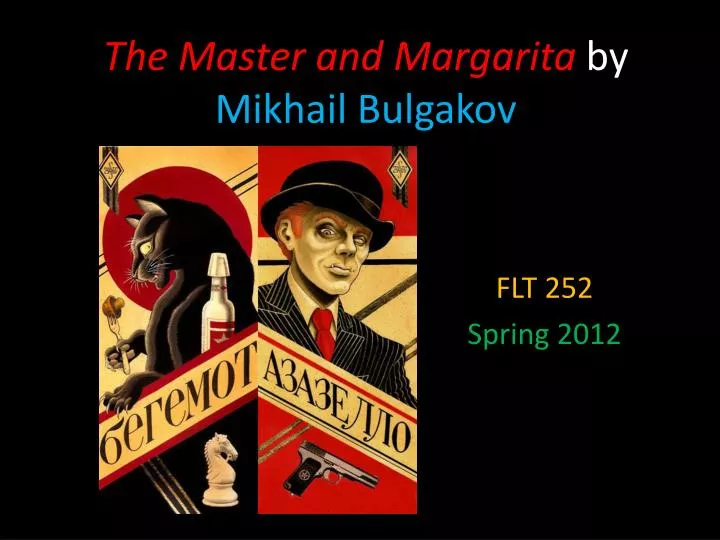

Berlioz brushes the prophecy of his death off, only to have it come true just pages later in the novel.

The opening sequence of the book presents a direct confrontation between the unbelieving head of the literary bureaucracy, Berlioz (Берлиоз), and an urbane foreign gentleman who defends belief and reveals his prophetic powers ( Woland). The havoc wreaked by this group targets the literary elite, along with its trade union, MASSOLIT (a Soviet-style abbreviation for "Moscow Association of Writers", Московская ассоциация литераторов, but possibly interpretable as "Literature for the Masses" one translation of the book also mentions that this could be a play on words in Russian, which could be translated into English as something like "LOTSALIT"), its privileged HQ Griboyedov's House, corrupt social-climbers and their women (wives and mistresses alike) – bureaucrats and profiteers – and, more generally, skeptical unbelievers in the human spirit. The first is 1930s Moscow, which is visited by Satan in the guise of Woland or Voland (Воланд), a mysterious gentleman "magician" of uncertain origin, who arrives with a retinue that includes the grotesquely dressed "ex-choirmaster" valet Koroviev (Fagotto) (Фагот, the name means " bassoon" in Russian and some other languages), a mischievous, gun-happy, fast-talking black cat Behemoth (Бегемот, a subversive Puss in Boots, the name referring at once to the Biblical monster and the Russian word for Hippopotamus), the fanged hitman Azazello (Азазелло, hinting of Azazel), the pale-faced Abadonna (Абадонна, a reference to Abaddon) with a death-inflicting stare, and the witch Hella (Гелла). The novel alternates among three settings.

This version remained the canonical edition until 1989, when the last version was prepared by literature expert Lidiya Yanovskaya based on all available manuscripts. In Russia, the first complete version, prepared by Anna Saakyants, was published by Khudozhestvennaya Literatura in 1973, based on the version of the beginning of 1940 proofread by the publisher. In 1967 the publisher Posev ( Frankfurt) printed a version produced with the aid of these inserts. The text of all the omitted and changed parts, with indications of the places of modification, was published on a samizdat basis. Bulgakov continued to polish the work with the aid of his wife, but was forced to stop work on the fourth version four weeks before his death in 1940.Ī censored version (12% of the text removed and still more changed) of the book was first published in Moscow magazine (no. The second draft was completed in 1936 by which point all the major plot lines of the final version were in place. which was transformed by Bulgakov into the ball of the novel. Ambassador to the Soviet Union William Bullitt. In 1935 Bulgakov went to Spaso House, the residence of U.S. He burnt the first manuscript of the novel in 1930, seeing no future as a writer in the Soviet Union.


 0 kommentar(er)
0 kommentar(er)
